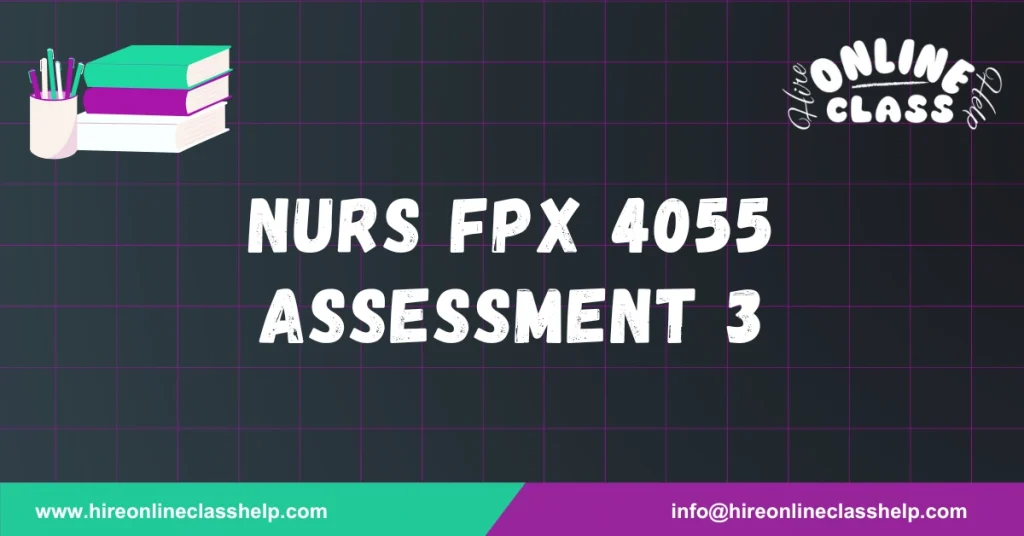






Name
Capella University
NURS-FPX4055 Optimizing Population Health through Community Practice
Prof. Name
Date
Disasters reveal deep-rooted vulnerabilities in communities like Tall Oaks, where socioeconomic inequalities, communication barriers, and cultural diversity issues challenge recovery. For a recovery plan to be effective, it must integrate government strategies, healthcare frameworks, and collaboration across sectors. The Crisis and Emergency Risk Communication (CERC) framework offers a structured approach to evaluate how such factors impact recovery, reduce health disparities, and promote service equity during crises.
Tall Oaks, a city of 50,000 residents, struggles with health and safety concerns rooted in income disparities and limited access to resources. With a median income of \$44,444, many residents live below the poverty line, limiting their ability to respond effectively to disasters. Health literacy is also low at 22.5%, partly due to limited higher education access. Additionally, many residents, especially those under 65 with disabilities or without insurance, face elevated risks in emergencies.
Cultural diversity in Tall Oaks includes 49% White, 36% Black, and 25% Hispanic/Latino residents (Capella University, n.d). While diversity can enhance resilience, it also brings challenges in emergency communication. Many older adults live in high-risk flood zones like Willow Creek and Pine Ridge, and language or trust issues prevent some Hispanic/Latino residents from accessing vital services. Infrastructural weaknesses further isolate these groups during crises.
Disaster aftermaths leave elderly and disabled people without community support or relocation options (Bailie et al., 2022). Low-income residents cannot easily access health facilities like Red Oaks Medical Center when infrastructure collapses. Coupled with cultural and economic disadvantages, recovery becomes slower and more fragmented. An equitable disaster recovery approach must incorporate inclusive and comprehensive strategies.
The socioeconomic and cultural dynamics in Tall Oaks interact in complex ways, worsening disaster outcomes. Poor housing in flood-prone areas increases risks for low-income families and elderly residents. Education gaps also hinder disaster readiness as health literacy remains low. Language barriers and mistrust between providers and Hispanic/Latino communities delay critical response times (Capella University, n.d).
Infrastructure failures disproportionately impact those without transport or financial means, who become cut off from medical facilities. Long recovery timelines are worsened for people facing disability or chronic health conditions (Blackman et al., 2023). A culturally informed, collaborative recovery plan can improve outcomes by addressing these intersecting vulnerabilities.
A culturally sensitive plan in Tall Oaks must address health disparities while increasing access to community services. Anchored in social justice principles, this plan prioritizes equitable access across all population groups, regardless of income, language, or ability status (Bhugra et al., 2022). The strategy targets at-risk groups early, offering multilingual disaster communications and culturally tailored outreach, especially for Hispanic/Latino residents.
Mobile health units and community recovery hubs will be deployed to flood-hit zones to assist uninsured, elderly, and low-income individuals (Sheerazi et al., 2025). Financial barriers will be mitigated through emergency transportation, temporary shelter, and assistance with medical and housing expenses. Strategic alliances with community-based organizations will enhance service distribution and public trust (Kristian & Fajar, 2024).
Healthcare and emergency teams will undergo cultural competence training to improve interactions and service delivery. By incorporating principles of equity, participation, and human rights, the plan ensures marginalized populations are prioritized throughout disaster response efforts.
The success of Tall Oaks’ recovery depends heavily on policies that align with the CDC’s CERC framework, which highlights the importance of timely, accurate, and accessible communication during emergencies. Free virtual CERC training sessions, lasting 1–3 hours, equip health professionals with communication skills to improve public trust and effective response (CDC, 2025).
The Americans with Disabilities Act (ADA) mandates that emergency services provide equal access for people with disabilities, including shelter access, interpreters, and mobility tools (ADA, 2025). With nearly 20% of Americans living with a disability, adherence to ADA requirements is essential in disaster recovery.
Federal legislation like the Robert T. Stafford Act and the 2018 Disaster Recovery Reform Act (DRRA) enables Tall Oaks to access funding for infrastructure repair, medical aid, and housing. These policies support underserved areas like Pine Ridge by expanding aid eligibility and allowing flexible fund allocation (Horn et al., 2021). Data tools such as trace mapping will be used to identify service gaps and direct resources where needed.
Disaster recovery in Tall Oaks requires both communication upgrades and professional teamwork. Multilingual communication via alerts, signs, and local radio can bridge gaps during emergencies. Hospitals must adopt culturally sensitive triage and multilingual interpretation to improve care access for non-English-speaking populations.
Cultural competence training for responders builds community trust and improves adherence to disaster protocols (Bonfanti et al., 2023). Meanwhile, interprofessional collaboration across health, emergency, and social services ensures faster and broader service coverage (Yazdani & Haghani, 2024). Local leaders, schools, and churches should help reach residents without digital or transportation access.
Community surveys and town halls offer feedback loops, increasing satisfaction and ensuring recovery plans reflect actual needs (Vandrevala et al., 2024). Without these strategies, medical errors, miscommunication, and trust breakdowns become common—especially in high-stress, multilingual settings.
| Category | Challenges | Solutions |
|---|---|---|
| Socioeconomic Barriers | Low income, poor housing in flood zones | Financial aid, temporary housing, targeted infrastructure investment |
| Health and Education Disparities | Low health literacy, lack of insurance, poor education | Mobile clinics, multilingual communication, outreach programs |
| Cultural and Language Issues | Communication breakdowns with Hispanic/Latino populations | Multilingual staff, culturally relevant training, local outreach |
| Infrastructure Limitations | Broken roads, closed markets/schools during disasters | Emergency transportation, trace mapping, expanded funding through DRRA |
| Policy and Legal Support | Compliance with ADA, limited emergency resources | Federal assistance via Stafford Act, ADA access requirements, public health policy updates |
| Communication and Interprofessional Gaps | Inconsistent messaging, lack of collaboration across agencies | CERC framework training, team-based emergency response, community participation |
For Tall Oaks to achieve effective disaster recovery, it must prioritize integrated health strategies, improved communication, and policy alignment. By leveraging the CERC framework and committing to culturally sensitive practices, the city can reduce disparities and ensure equitable recovery outcomes. Strategic partnerships, data-driven planning, and inclusive service delivery will help all residents—regardless of background—build resilience and recover with dignity.
ADA. (2025). Health Care and the Americans With Disabilities Act. ADA National Network. https://adata.org/factsheet/health-care-and-ada
Bailie, J., Matthews, V., Bailie, R., Villeneuve, M., & Longman, J. (2022). Exposure to risk and experiences of river flooding for people with disability and carers in rural Australia: A cross-sectional survey. BMJ Open, 12(8), e056210. https://doi.org/10.1136/bmjopen-2021-056210
Bhugra, D., Tribe, R., & Poulter, D. (2022). Social justice, health equity, and mental health. South African Journal of Psychology, 52(1), 3–10. https://doi.org/10.1177/00812463211070921
Blackman, D., Prayag, G., Nakanishi, H., Chaffer, J., & Freyens, B. (2023). Wellbeing in disaster recovery: Understanding where systems get stuck. International Journal of Disaster Risk Reduction, 95, 103839. https://doi.org/10.1016/j.ijdrr.2023.103839
Bonfanti, R. C., Oberti, B., Ravazzoli, E., Rinaldi, A., Ruggieri, S., & Schimmenti, A. (2023). The role of trust in disaster risk reduction: A critical review. International Journal of Disaster Risk Reduction.
Capella University. (n.d.). Community Health Demographics: Tall Oaks. Capella FlexPath.
CDC. (2025). Crisis and Emergency Risk Communication (CERC). Centers for Disease Control and Prevention. https://emergency.cdc.gov/cerc/
Horn, J., Phillips, B., & Baker, J. (2021). Disaster Recovery Reform Act (DRRA) and Federal Aid for Vulnerable Communities. FEMA Research Reports.
Kristian, H., & Fajar, R. (2024). Community engagement and trust in disaster recovery: A framework for equitable health services. Journal of Disaster Studies, 14(2), 210–227.
Sheerazi, S., Malik, N., & Ahmed, F. (2025). Mobile health interventions in post-disaster settings: Addressing health disparities. Global Public Health Reports, 7(1), 85–92.
Vandrevala, T., Montague, J., & Papadopoulos, C. (2024). Public involvement in disaster recovery planning: The value of citizen voice. Health and Place, 78, 102948. https://doi.org/10.1016/j.healthplace.2023.102948
Yazdani, S., & Haghani, M. (2024). Interprofessional collaboration in emergency response: Strategies for improving disaster resilience. Journal of Emergency Management, 22(1), 44–53.